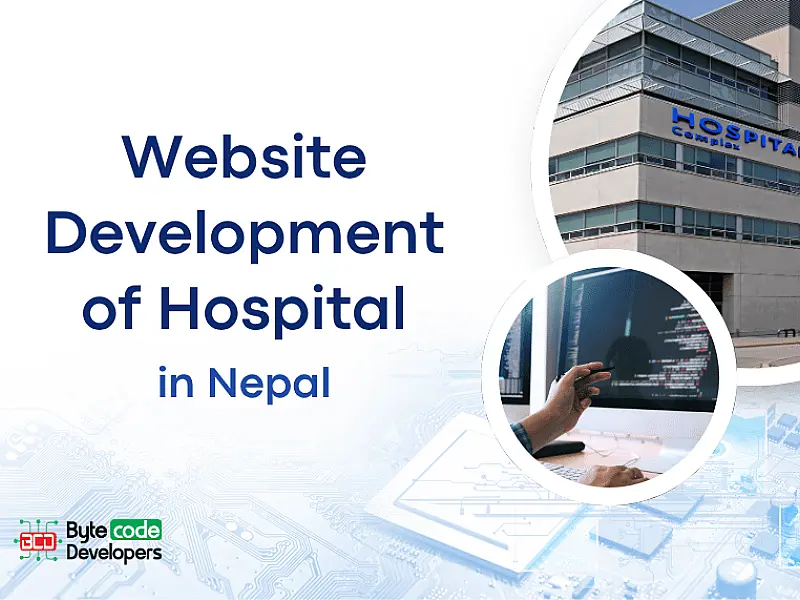
Table of Contents
Why Hospitals in Nepal Need a Professional Website
A hospital website is no longer just for showing address and contact info. In today’s digital-first healthcare model, your website becomes a:
- 24/7 information hub
- Patient support system
- Appointment booking gateway
- Public health awareness platform
- Digital profile of your services and specialists
More patients now Google a hospital before visiting—your website is your first impre
Key Features of a Hospital Website
| Feature | Description |
|---|---|
| Home Page | Overview, quick links, emergency contact |
| Doctor Directory | Profile, availability, specialty |
| Departments | Cardiology, Gynecology, Pediatrics, etc. |
| Appointment Booking | Form-based or integrated system |
| Announcements | Health alerts, service updates |
| Patient Portal | Results, history, reports access |
| Location + Map | Google Maps integration |
| Gallery | Facilities, operation theaters, labs |
| FAQs | Insurance, visiting hours, health tips |
| Blog | Health articles, awareness content |
| Contact Page | Form, WhatsApp, emergency numbers |
These features ensure better trust, transparency, and service delivery.
Technology Stack for Hospital Website
| Layer | Tools/Tech |
|---|---|
| Frontend | HTML5, Bootstrap, React.js |
| Backend | Laravel, Node.js, WordPress |
| CMS | WordPress with Medical Themes |
| Database | MySQL, PostgreSQL |
| Hosting | Cloudways, Hostinger, AWS Lightsail |
| Security | HTTPS, reCAPTCHA, SSL, Firewall |
Choose Laravel for custom integrations or WordPress for quicker deployments.
Mobile Optimization and Speed
In Nepal, over 85% of website traffic is mobile. For a hospital site, mobile usability can literally save lives.
Optimization Essentials:
- Load under 3 seconds
- Responsive design for all screen sizes
- Prioritize emergency links & appointment booking
- Use CDN and image compression
- Test with Google PageSpeed
Online Appointment & Patient Portals
A functional website allows patients to:
- Book doctor appointments
- Choose departments
- View lab reports securely
- Pay bills online
- Chat with reception or medical reps
Use APIs to sync with hospital software (HIS/EMR) for seamless backend integration.
Doctor Profile and Department Pages
Each doctor should have a profile with:
- Photo
- Qualifications
- Specializations
- OPD timings
- Location (which branch/floor)
Department pages should include:
- Services offered
- Equipment used
- Key staff
- Contact for inquiries
These improve both SEO and patient decision-making.
Design Tips for Hospital Websites
- Clean layout with white and blue color schemes
- Emergency contact always visible (top bar or floating)
- Use medical icons for clarity
- Click-to-call for mobile users
- Accessible fonts, contrast, and structure
Don’t overload with content. Guide the user to action.
Hosting & Domain Requirements
- Use .org.np if the hospital is a nonprofit
- Get a secure SSL certificate (Let’s Encrypt or paid)
- Choose uptime-guaranteed hosting providers
- Implement daily backups and uptime monitoring
Trust is non-negotiable in healthcare so is site reliability.
SEO for Healthcare Websites in Nepal
SEO Essentials:
- Local SEO via Google Business Profile
- Keyword-optimized department and doctor pages
- Blog for health awareness topics
- Alt tags, schema markup for reviews and doctors
Ranking well brings in more local footfall and online appointments.
Conclusion
Hospital website development in Nepal is no longer just about digital visibility—it’s about saving time, saving lives, and building trust. Whether you're a private hospital or a public medical center, your website should:
- Be mobile-first and fast
- Offer online bookings and health info
- Highlight your doctors and services
- Be secure, SEO-optimized, and user-friendly




 March 26, 2025
March 26, 2025

-thumb.webp)











